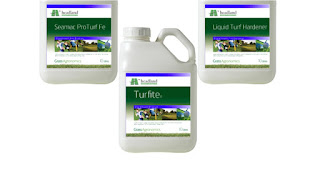WINTER OF 2023/24

As you can see its been a while since my last blog post, I'm sure i will start to write again as the members need informing of all things turf and golf. So firstly I have to mention the weather...Wow!. We've had a lot of course closures for lengthy periods and a short course most of the autumn/winter but we are not alone in this scenario and every clay based course has been in the same boat, pardon the pun!, and even the sandy courses have closed from time to time which is unheard of really. The problem was not just the rainfall totals in Autumn itself, but the rainfall totals that started mid summer and has been relentless since. The issue is not just the amount from the sky, but the amount lost from evapotransporation (ETs). Mid summer you can lose between 3- 6mm water per day from ETs, the reason why in Julys 100+mm rainfall there was not many issues at all and still needed the irrigation on the greens some nights. In say December when the sun is much lower, the day length ...





